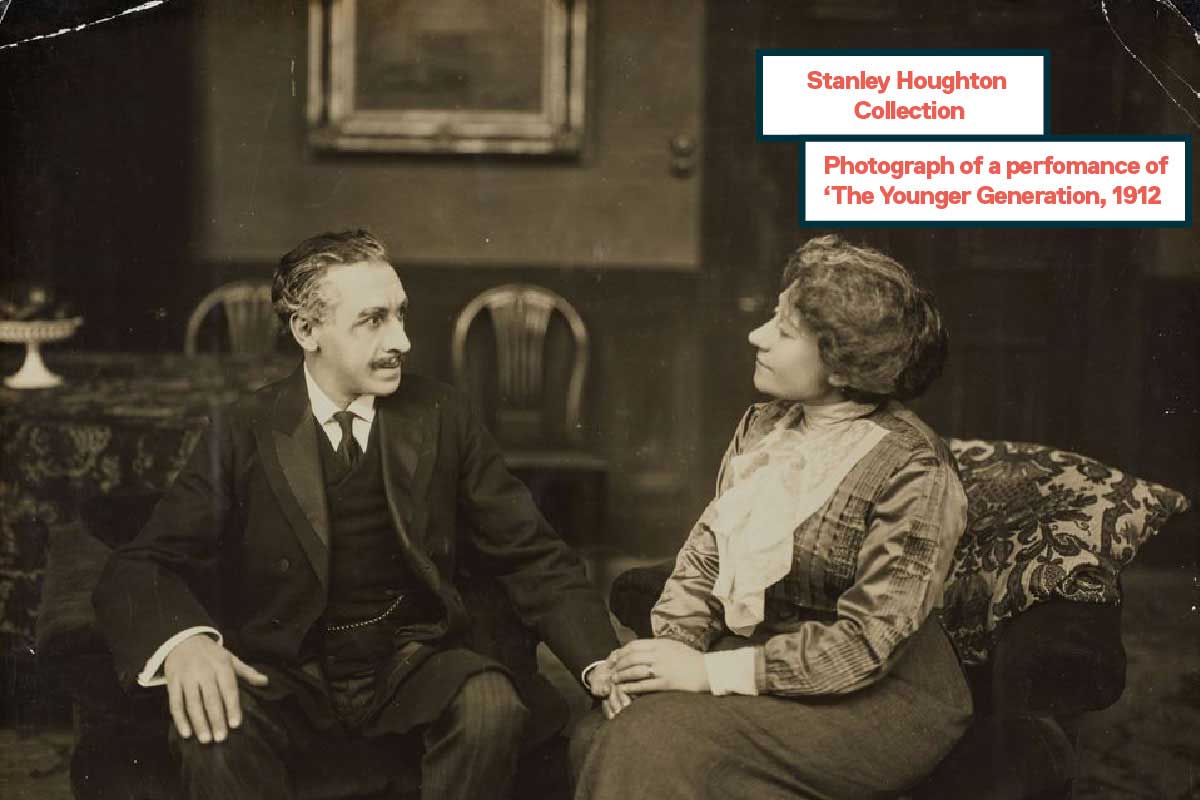Stanley Houghton Collection
Stanley Houghton was an early 20th century playwright born in Ashton upon Mersey, Sale.
An overview
He was part of the so-called 'Manchester School', a group of dramatists championed by Annie Horniman. Horniman was proprietor of Manchester's Gaiety Theatre, the first repertory theatre outside of London with its own resident company of actors. The Gaiety had a rotating programme of classics, contemporary and new plays by local writers. 'If Lancashire playwrights will send their plays to me', wrote Horniman, 'I shall pledge myself to read them through. Let them not write as one dramatist does, about Countesses and Duchesses and society existing in imaginations, but about their friends and enemies - about real life.'
Houghton is best known for his play 'Hindle Wakes', a comedy on the theme of young people's right to personal freedom and an attack on the 'double standard' of morality. Written in 1910 and performed for the first time in 1912, Hindle Wakes was controversial at the time for its portrayal of a mill girl who appals the older generation by choosing independence rather than marriage to the mill owners' son who has made her pregnant.
The strength of this collection is in the numerous manuscripts of Houghton's unpublished plays. These are a mixture of comedies, such as Pearls, which was designed for the music hall, and melodramas such as The Intriguers that demonstrate his development as a writer and working method. Ginger, for example, is evidence of Houghton's meticulous planning. The collection also includes first editions of Houghton's published works, including 'Twixt Cup and Lip, a version of Houghton's play The Dear Departed in Scots dialect by Felix Fair.
Also available are two sets of photographs of early 20th century theatre productions of Hindle Wakes and The Younger Generation, which includes actors of the Gaiety repertory theatre. They capture the sets and costumes at a particular time in history and are portraits of early 20th century actresses, including Ada King, Sybil Thorndike and Edyth Goodall.
How can it be used?
The manuscripts demonstrate how a writer may have developed plays and ideas. Houghton's work should be understood within the context of its time and his own identity. The photographs can be used as a visual record of theatre productions in the Edwardian era.
Who might be interested?
Students and researchers in English Literature & Language, Performance, Art & Design, Fashion, History & Politics. Anyone interested in Edwardian theatre and costume and set design.
Types of material
Handwritten and typescript manuscripts; photographic images; published volumes.

